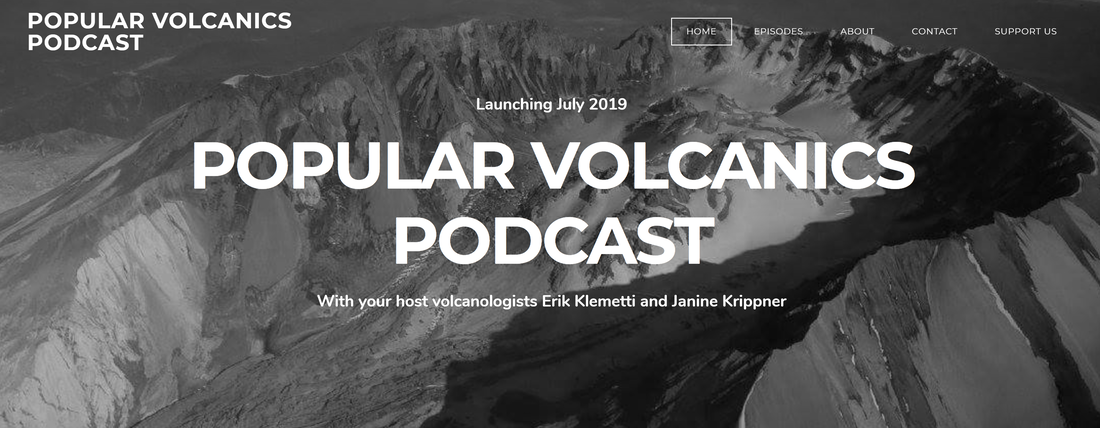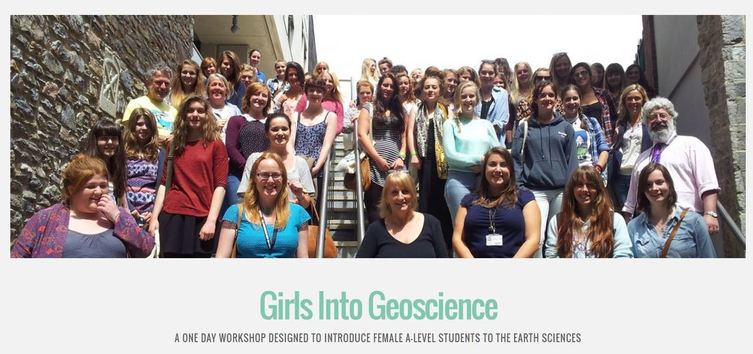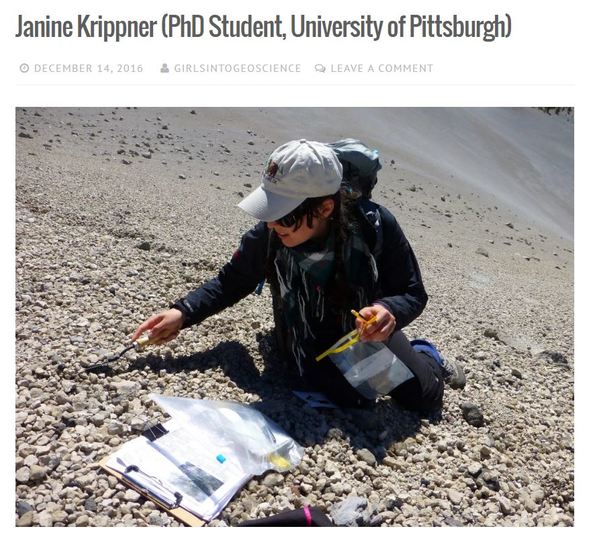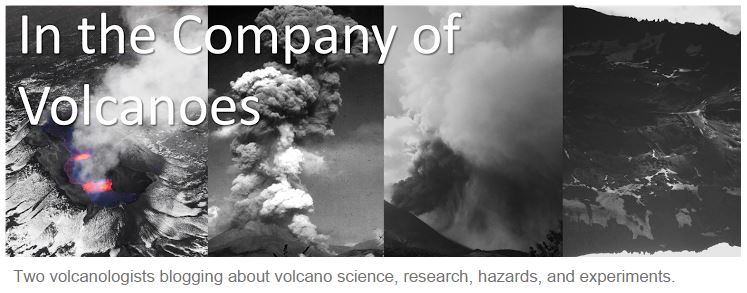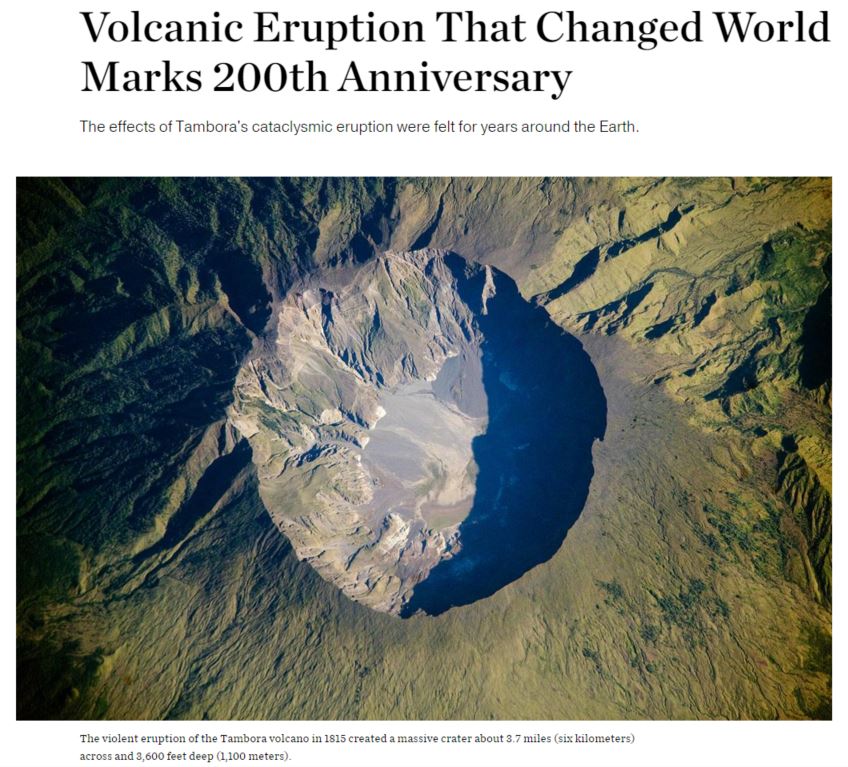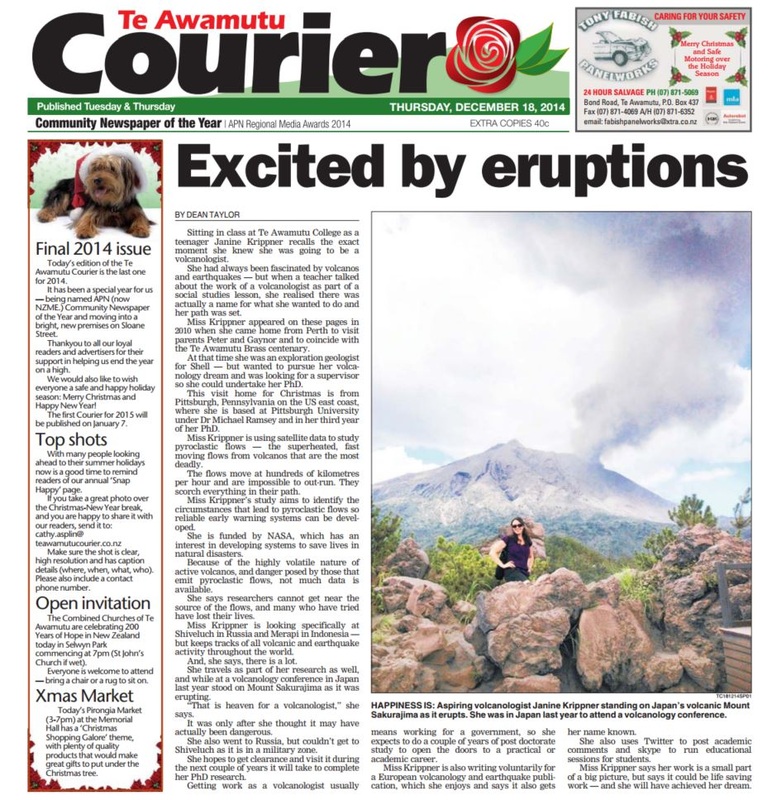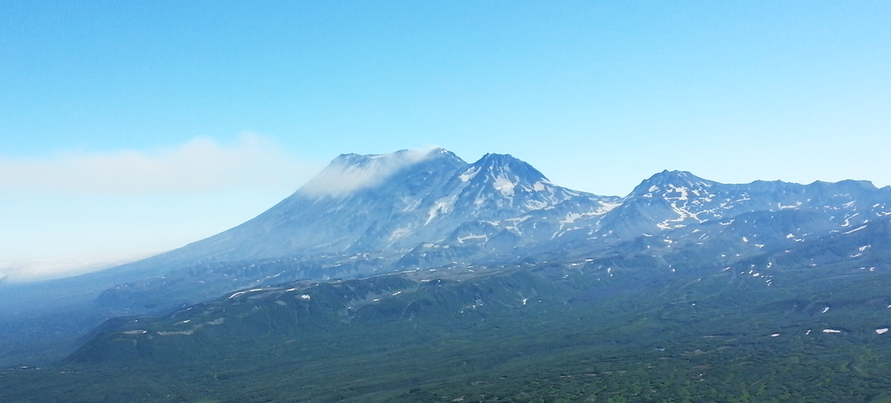Top Photo: 1948 Ngauruhoe Eruption, New Zealand. Photo courtesy of John A. Krippner (My Grandfather).
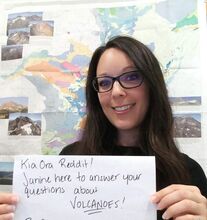
Janine B. Krippner Ph.D.
Physical Volcanologist (eruptions and rocks!) + Remote Sensing + Science Communication
Honorary Research Associate at the University of Waikato and currently working in Taupō, New Zealand. Also working with GeoTenerife in the Canary Islands.
Working on: several projects investigating the recent history of Ngauruhoe volcano, New Zealand, and the 2021 Cumbre Vieja/ La Palma eruption in the Canary Islands.
National Geographic Explorer
AGU 2019 Voices for Science Advocate
Co-host of the Popular Volcanics podcast
Creator and Host of the Volcano Moments with Dr. Janine Krippner video series
Twitter: @janinekrippner
Blogger on In the Company of Volcanoes
Created Voices of Volcanology
Physical Volcanologist (eruptions and rocks!) + Remote Sensing + Science Communication
Honorary Research Associate at the University of Waikato and currently working in Taupō, New Zealand. Also working with GeoTenerife in the Canary Islands.
Working on: several projects investigating the recent history of Ngauruhoe volcano, New Zealand, and the 2021 Cumbre Vieja/ La Palma eruption in the Canary Islands.
National Geographic Explorer
AGU 2019 Voices for Science Advocate
Co-host of the Popular Volcanics podcast
Creator and Host of the Volcano Moments with Dr. Janine Krippner video series
Twitter: @janinekrippner
Blogger on In the Company of Volcanoes
Created Voices of Volcanology
Who I am as a scientist
I am a physical volcanologist, which means I study the physical processes that occur during eruptions using a wide range of methods and tools. I am interested in volcanic processes (how they erupt), hazards (the potentially dangerous parts), and impacts (how they interact with people and things).
My career has involved work on Strombolian and Vulcanian eruptions, and large block-and-ash flows, which a type of dangerous pyroclastic flow that are triggered by a lava dome partially collapsing. I've done this through studying the deposits in the field, lab work that has included petrology (looking at the rocks under a microscope) and geochemistry, looking at the bubbles formed through gases being released from the magma (vesicles), the shapes and sizes of the rocks that were erupted, and more. Through my PhD I used a range of satellite data types to investigate deposits from space.
My work with the Smithsonian Global Volcanism Program has involved improving the information we have on almost all of the volcanoes that have erupted in the past 12,000 years. This has involved going through a heck of a lot of research to make sure we have the best information for everyone to use.
I am currently working on several projects that are based on understanding the eruptive history of Ngāuruhoe (which is Mount Doom in Lord of the Rings). Part of this is continuing work I started over a decade ago during my Masters degree. Another aspect of my work is the damage caused by the 2021 Cumbre Vieja/ La Palma eruption in the Canary Islands.
It is important for us to understand every aspect of volcanoes, using every tool that we can, in order to understand what they might do next.
I am a physical volcanologist, which means I study the physical processes that occur during eruptions using a wide range of methods and tools. I am interested in volcanic processes (how they erupt), hazards (the potentially dangerous parts), and impacts (how they interact with people and things).
My career has involved work on Strombolian and Vulcanian eruptions, and large block-and-ash flows, which a type of dangerous pyroclastic flow that are triggered by a lava dome partially collapsing. I've done this through studying the deposits in the field, lab work that has included petrology (looking at the rocks under a microscope) and geochemistry, looking at the bubbles formed through gases being released from the magma (vesicles), the shapes and sizes of the rocks that were erupted, and more. Through my PhD I used a range of satellite data types to investigate deposits from space.
My work with the Smithsonian Global Volcanism Program has involved improving the information we have on almost all of the volcanoes that have erupted in the past 12,000 years. This has involved going through a heck of a lot of research to make sure we have the best information for everyone to use.
I am currently working on several projects that are based on understanding the eruptive history of Ngāuruhoe (which is Mount Doom in Lord of the Rings). Part of this is continuing work I started over a decade ago during my Masters degree. Another aspect of my work is the damage caused by the 2021 Cumbre Vieja/ La Palma eruption in the Canary Islands.
It is important for us to understand every aspect of volcanoes, using every tool that we can, in order to understand what they might do next.
NEWS & UPDATES

Ehlers-Danlos awareness month
I dedicated one of my weekly columns for the Te Awamutu and Cambridge News to raising awareness about Ehlers-Danlos Syndrome (EDS). I have been sharing more about my journey living with a disability, when it can still be hard to use that word, and pushing forward even when my body fights me. Building the courage to talk about it has been a process, but I see how much it can help others with similar struggles. The link below will lead you to the article.
Nothing wrong with us? Not so …..
"As a volcanologist I work hard on local and international research projects and I thrive spending long physically demanding days on volcanoes. I am also in pain almost every single day.
May is Ehlers-Danlos Syndrome (EDS) awareness month. Over the years sharing my journey has helped others who have similar struggles, I hope this can help people closer to home."
Photo: me in the field near Ruapehu volcano looking at lahar deposits, taken by my friend and colleague Brian Perttu.
Ehlers Danlos Society website
I dedicated one of my weekly columns for the Te Awamutu and Cambridge News to raising awareness about Ehlers-Danlos Syndrome (EDS). I have been sharing more about my journey living with a disability, when it can still be hard to use that word, and pushing forward even when my body fights me. Building the courage to talk about it has been a process, but I see how much it can help others with similar struggles. The link below will lead you to the article.
Nothing wrong with us? Not so …..
"As a volcanologist I work hard on local and international research projects and I thrive spending long physically demanding days on volcanoes. I am also in pain almost every single day.
May is Ehlers-Danlos Syndrome (EDS) awareness month. Over the years sharing my journey has helped others who have similar struggles, I hope this can help people closer to home."
Photo: me in the field near Ruapehu volcano looking at lahar deposits, taken by my friend and colleague Brian Perttu.
Ehlers Danlos Society website
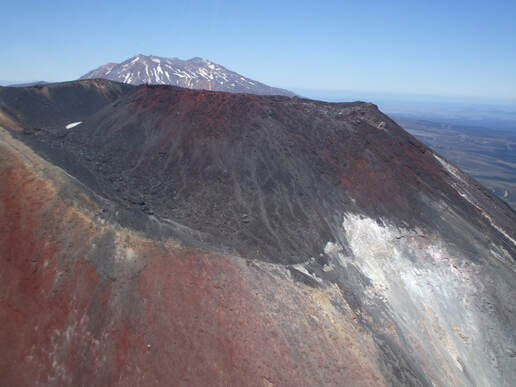
On Shaky Ground
I have loved writing a short column for my local newspapers this year. My goal is to introduce terms and concepts that relate mostly to volcanoes, but also other processes like tsunami and fire as they come up in my every day life and work. Each week inspiration hits as I am working, reading, or having conversations with colleagues or friends. This year, some of them were while I was in La Palma, Canary Islands, in communities that were destroyed by lava flows in 2021. For me, this is part of giving back to the community that raised me. I do this in the hopes that it is enjoyed, and that it increases the knowledge of volcanic processes. I truly believe that it is our responsibility to share our science in a way that communities and individuals can access it and use it if needed. If you are considering volunteering in similar ways, I highly encourage you to do so. This has been a rewarding experience.
As 2023 is reaching its end, here are some of the articles I wrote for the Te Awamutu and Cambridge Newspapers. I hope you enjoy them.
Volcanoes - why do we care?
Viewing misinformation
Pets and disasters
It's when, not if
Watching a crisis unfold
Plane v Volcano
Into the wild
Strength in disaster
Watching and waiting...
Eruptions and Agriculture
A violent past
Full of fear and doing it anyway
Don't hesitate, get out
Our invisible challenges
After the eruption...
Facts about calderas
Scary speed of fire
Inside a disaster zone
Eruption preparation
A what-if situation
I have loved writing a short column for my local newspapers this year. My goal is to introduce terms and concepts that relate mostly to volcanoes, but also other processes like tsunami and fire as they come up in my every day life and work. Each week inspiration hits as I am working, reading, or having conversations with colleagues or friends. This year, some of them were while I was in La Palma, Canary Islands, in communities that were destroyed by lava flows in 2021. For me, this is part of giving back to the community that raised me. I do this in the hopes that it is enjoyed, and that it increases the knowledge of volcanic processes. I truly believe that it is our responsibility to share our science in a way that communities and individuals can access it and use it if needed. If you are considering volunteering in similar ways, I highly encourage you to do so. This has been a rewarding experience.
As 2023 is reaching its end, here are some of the articles I wrote for the Te Awamutu and Cambridge Newspapers. I hope you enjoy them.
Volcanoes - why do we care?
Viewing misinformation
Pets and disasters
It's when, not if
Watching a crisis unfold
Plane v Volcano
Into the wild
Strength in disaster
Watching and waiting...
Eruptions and Agriculture
A violent past
Full of fear and doing it anyway
Don't hesitate, get out
Our invisible challenges
After the eruption...
Facts about calderas
Scary speed of fire
Inside a disaster zone
Eruption preparation
A what-if situation
Photo: the summit of Ngāuruhoe volcano during my Masters degree fieldwork in 2008
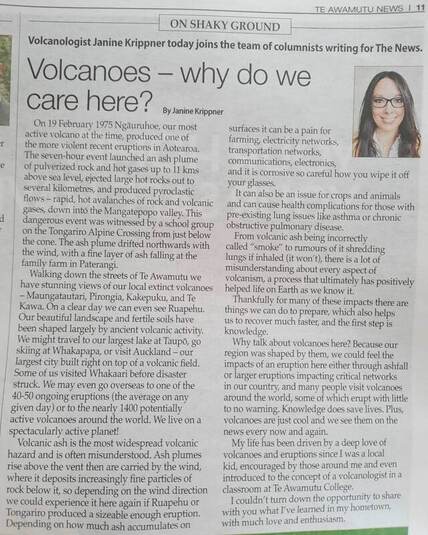
New Column for the local paper
I was recently interviewed after gifting a Taonga, a precious object, to a local Iwi that was found by my Grandfather on his farm many years ago. I knew it was the right thing to do to, it never belonged to us. The opportunity arose when my family were invited to attend a gathering when the Iwi handed over a cultural assessment for the lake beside my Grandfather's farm (which is no longer in our family) to the local council. Not wanting to make a fuss I didn't even tell anyone I was taking it, but it turned into a meaningful and emotional part of the day where something precious was rightfully handed back to those who have this ancestral connection to the land and the object. I came back to New Zealand wanting to do better, this is one small part of that.
During the interview I was asked if I would be interested in being a columnist for the local paper. I could write about volcanoes or anything else I want to share from my journeys. It is important to me that we share the knowledge we have and this presented a way of doing it that I have not tried before, so I jumped at the chance. This is one small way of giving back with my time and what I have learned along the way, to the town that shaped who I am today.
I always try to start a presentation with "why do we care?" so that seemed like a good place to start for my local communities of Te Awamutu, where I was raised, and nearby Cambridge.
Here's to another side quest in this adventure of life.
I was recently interviewed after gifting a Taonga, a precious object, to a local Iwi that was found by my Grandfather on his farm many years ago. I knew it was the right thing to do to, it never belonged to us. The opportunity arose when my family were invited to attend a gathering when the Iwi handed over a cultural assessment for the lake beside my Grandfather's farm (which is no longer in our family) to the local council. Not wanting to make a fuss I didn't even tell anyone I was taking it, but it turned into a meaningful and emotional part of the day where something precious was rightfully handed back to those who have this ancestral connection to the land and the object. I came back to New Zealand wanting to do better, this is one small part of that.
During the interview I was asked if I would be interested in being a columnist for the local paper. I could write about volcanoes or anything else I want to share from my journeys. It is important to me that we share the knowledge we have and this presented a way of doing it that I have not tried before, so I jumped at the chance. This is one small way of giving back with my time and what I have learned along the way, to the town that shaped who I am today.
I always try to start a presentation with "why do we care?" so that seemed like a good place to start for my local communities of Te Awamutu, where I was raised, and nearby Cambridge.
Here's to another side quest in this adventure of life.
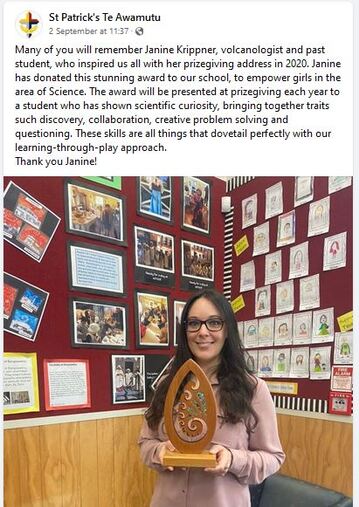
Giving back to the community and empowering girls (I hope!)
I'm sharing this in the hope that it inspires others to give back, especially since I can't believe this didn't occur to me sooner. I donated an annual award to my old school to encourage & empower girls aged 5-12 in scientific thinking, knowing that girls often think they're just not good at it. Years ago now I read the results of a study that showed how young girls have little confidence in STEM areas and it has bugged me ever since. My sincere hope is that by having this given out each year can get girls thinking about the different aspects of scientific thinking and that they CAN do it, if that's what they choose. The only hard part of donating this award was choosing the physical award itself, the rest was so wonderful to experience.
Can't wait to head back to my old stomping grounds and meet the recipients each year :)
Text: "Many of you will remember Janine Krippner, volcanologist and past student, who inspired us all with her prizegiving address in 2020. Janine has donated this stunning award to our school, to empower girls in the area of Science. The award will be presented at prizegiving each year to a student who has shown scientific curiosity, bringing together traits such discovery, collaboration, creative problem solving and questioning. These skills are all things that dovetail perfectly with our learning-through-play approach. Thank you Janine!"
I'm sharing this in the hope that it inspires others to give back, especially since I can't believe this didn't occur to me sooner. I donated an annual award to my old school to encourage & empower girls aged 5-12 in scientific thinking, knowing that girls often think they're just not good at it. Years ago now I read the results of a study that showed how young girls have little confidence in STEM areas and it has bugged me ever since. My sincere hope is that by having this given out each year can get girls thinking about the different aspects of scientific thinking and that they CAN do it, if that's what they choose. The only hard part of donating this award was choosing the physical award itself, the rest was so wonderful to experience.
Can't wait to head back to my old stomping grounds and meet the recipients each year :)
Text: "Many of you will remember Janine Krippner, volcanologist and past student, who inspired us all with her prizegiving address in 2020. Janine has donated this stunning award to our school, to empower girls in the area of Science. The award will be presented at prizegiving each year to a student who has shown scientific curiosity, bringing together traits such discovery, collaboration, creative problem solving and questioning. These skills are all things that dovetail perfectly with our learning-through-play approach. Thank you Janine!"
AAPG Geosciences in the Media Award
I was stunned when I received a call that I was going to be presented with the 2020 AAPG (American Association of Petroleum Geologists) Geosciences in the Media Award. Really, like so many of us I am on my toes trying to keep my head above water so much so that when I heard that the AAPG president was trying to get hold of me I was nervous that I had done something wrong. It's weird how our brains work when we are juggling so much and trying so hard to do everything right, being hypercritical of ourselves and all that we do. I love that this award exists and I want to honor that here.
I was nominated for this award because of the work I did when I put my life on hold to spend each night (for around 3 months) trying to help people around the world get the information they needed during the Agung volcanic crisis. To me this was nothing special. People needed help. Someone had to try. Having no way of knowing how this would blow up (pun intended) with media interviews around the world, and lasting so long (no one could have possibly known how long this crisis would go on), I did what we do when people need help - put one foot in front of another and do something.
This is what so many of us do with science communication during earthquakes, hurricanes, fires, tsunamis, and pandemics to name a few. Many scientists are doing just that for months on end during this Coronavirus pandemic. Most of us never get thanked and quietly deal with burnout and trauma from the stress, while falling behind in publishing scientific papers and/or other areas of our careers and personal lives. This work is critical. It is hard. It often comes with a dangerously-toxic slew of judgement, nastiness, and bullying from people around the world, including from within our own fields. We are trained to be quiet and work hard behind the scenes. We are not trained to deal with this. We will keep making mistakes and learning from them, that is fundamentally how science - and being human - works. Awards like this one are a beacon of light - keep going, keep trying, this is important work.
To all of you out there putting your neck out to do the right thing, you are not alone and the world needs you. To all the science communicators, you are so important to all of us around the world, keep going. Keep finding new ways to reach more people. Keep listening to what people need from us (and where and how they need it). Ask for help. Above all else, keep being kind and compassionate. We rise together by lifting up others as we go.
To the dozens of people who helped me, guided me, supported me, and worked with me during the Agung and other volcanic crises, thank you so much. I am only one piece in this puzzle. To those who nominated me and decided that I am worthy of this honor, thank you. To those of you using the power of communication to help people with your area of expertise, thank you. To those of you lifting up and supporting those of us who are trying to figure this out as we go along, thank you. To all of you checking what you share online and circulating good information, thank you. To those of you making the internet a kinder place, thank you.
This is a global team effort.
Award information and past recipients here
I was stunned when I received a call that I was going to be presented with the 2020 AAPG (American Association of Petroleum Geologists) Geosciences in the Media Award. Really, like so many of us I am on my toes trying to keep my head above water so much so that when I heard that the AAPG president was trying to get hold of me I was nervous that I had done something wrong. It's weird how our brains work when we are juggling so much and trying so hard to do everything right, being hypercritical of ourselves and all that we do. I love that this award exists and I want to honor that here.
I was nominated for this award because of the work I did when I put my life on hold to spend each night (for around 3 months) trying to help people around the world get the information they needed during the Agung volcanic crisis. To me this was nothing special. People needed help. Someone had to try. Having no way of knowing how this would blow up (pun intended) with media interviews around the world, and lasting so long (no one could have possibly known how long this crisis would go on), I did what we do when people need help - put one foot in front of another and do something.
This is what so many of us do with science communication during earthquakes, hurricanes, fires, tsunamis, and pandemics to name a few. Many scientists are doing just that for months on end during this Coronavirus pandemic. Most of us never get thanked and quietly deal with burnout and trauma from the stress, while falling behind in publishing scientific papers and/or other areas of our careers and personal lives. This work is critical. It is hard. It often comes with a dangerously-toxic slew of judgement, nastiness, and bullying from people around the world, including from within our own fields. We are trained to be quiet and work hard behind the scenes. We are not trained to deal with this. We will keep making mistakes and learning from them, that is fundamentally how science - and being human - works. Awards like this one are a beacon of light - keep going, keep trying, this is important work.
To all of you out there putting your neck out to do the right thing, you are not alone and the world needs you. To all the science communicators, you are so important to all of us around the world, keep going. Keep finding new ways to reach more people. Keep listening to what people need from us (and where and how they need it). Ask for help. Above all else, keep being kind and compassionate. We rise together by lifting up others as we go.
To the dozens of people who helped me, guided me, supported me, and worked with me during the Agung and other volcanic crises, thank you so much. I am only one piece in this puzzle. To those who nominated me and decided that I am worthy of this honor, thank you. To those of you using the power of communication to help people with your area of expertise, thank you. To those of you lifting up and supporting those of us who are trying to figure this out as we go along, thank you. To all of you checking what you share online and circulating good information, thank you. To those of you making the internet a kinder place, thank you.
This is a global team effort.
Award information and past recipients here
|
StarTalk Podcast: Cosmic Queries – Volcanoes, with Neil deGrasse Tyson
It is so important that we keep working on reaching new audiences and finding new ways to get information on volcanoes and eruptions out into the world. There is an endless list of myths and misunderstandings to bust, with rampant misinformation racing ahead of us throughout the internet. StarTalk Radio gave me a chance to cover some of these, answering questions submitted by listeners. This was a lot of fun, I hope you enjoy it too! - Janine |
"Is the super volcano under Yellowstone going to erupt? What’s the difference between lava and magma? Neil deGrasse Tyson, comic co-host Chuck Nice, and volcanologist Janine Krippner, PhD, answer fan-submitted questions about volcanoes.
How many active volcanoes are in the world right now? Janine tells us about the Smithsonian Institution’s Global Volcanism Program which keeps tabs on all the active volcanoes in the world. Find out how the Ice Age wiped the volcanic record clean. You’ll learn the difference between magma and lava. Janine tells us what’s really going on with the super volcano underneath Yellowstone National Park. You’ll find out why Janine isn’t a fan of the term “super volcano.” We take it back to the basics: why do volcanoes explode? We explore why eruptions are important, and, why volcanoes play an important role in our ecosystems. We discuss how volcanoes contribute to climate change – and how they pale in comparison to human activity. Discover more about the different types of eruptions. We ponder whether proximity to geological activity enhances people’s desire to study it. Janine shares why robots won’t be taking the jobs of volcanologists any time soon. You’ll hear about lava – if it moves so slowly, how is it so destructive? You’ll also learn about “pyroclastic flow.” Lastly, we investigate how many dormant volcanoes have the potential to cause mass devastation on Earth. Janine shares why there’s uncertainty around predicting eruptions. Is society ready for a massive eruption? All that, plus, Janine tells us what volcanoes can teach us about the inside of our planet. " - Text taken from here |
Mount St Helens 40th eruption anniversary video series
The May 18, 1980 eruption of Mount St. Helens changed volcanology in so many ways. The eruption impacted the lives of those near the volcano at the time, and has influenced the careers of many volcanologists since then. A special video series explores what has changed since 1980 and includes memories of the events.
Watch the video series here.
The May 18, 1980 eruption of Mount St. Helens changed volcanology in so many ways. The eruption impacted the lives of those near the volcano at the time, and has influenced the careers of many volcanologists since then. A special video series explores what has changed since 1980 and includes memories of the events.
Watch the video series here.
Volcano video series - Volcano Moments with Dr. Janine Krippner
To create something helpful and positive during the pandemic (and beyond), I have a video series interviewing volcanologists around the world about different aspects of volcanoes and eruptions, such as the video below.
Check out the videos here.
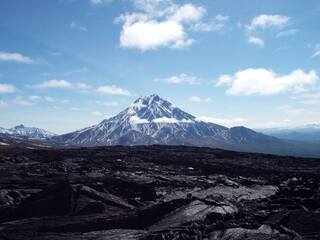
New blog post! So you want to visit an active volcano?
After we lost another life on a volcano last week (someone who was doing nothing wrong), I have written about the things I consider to reduce the risk of getting hurt or killed on a volcano. Volcanoes are incredible places to visit and I intend to keep doing so, but just like any travel to new places there are things we have to take into account. My hope is that this helps people prepare to have a safe and enjoyable trip to experience these beautiful beasts of nature.
Read full blog here.
After we lost another life on a volcano last week (someone who was doing nothing wrong), I have written about the things I consider to reduce the risk of getting hurt or killed on a volcano. Volcanoes are incredible places to visit and I intend to keep doing so, but just like any travel to new places there are things we have to take into account. My hope is that this helps people prepare to have a safe and enjoyable trip to experience these beautiful beasts of nature.
Read full blog here.
NEW VOLCANO PODCAST!
I am very excited to share with you all that I am now a co-host of a podcast - Popular Volcanics! Alongside Volcanologist Erik Klemetti, we will be talking about volcanic activity around the world and busting some good old volcano myths.
Our first episode is out now and we start with a bang with none other than Yellowstone volcano. Find all the listening details by clicking on this link.
I am very excited to share with you all that I am now a co-host of a podcast - Popular Volcanics! Alongside Volcanologist Erik Klemetti, we will be talking about volcanic activity around the world and busting some good old volcano myths.
Our first episode is out now and we start with a bang with none other than Yellowstone volcano. Find all the listening details by clicking on this link.
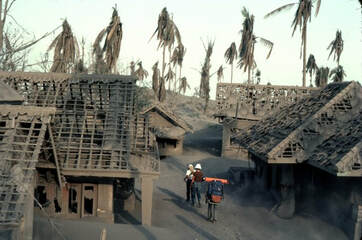
Volcanic ash is not fluffy & volcanoes don't smoke! Setting the story straight & how to protect yourself.
As you read this, there are likely around 20 volcanoes actively erupting right now. There are over 40 ongoing eruptions around the world. There are 1,431 volcanoes that we consider to be potentially active, or that erupted recently enough to be able to erupt any time soon (list here), and there are hundreds of millions of people living around those volcanoes. On top of that, there are many people who travel to or near volcanoes, and even more who fly around the world in planes that can be impacted by volcanic ash. Freight planes and ships can be halted and economies are impacted. As you see in this first video that was taken at Mount St. Helens on May 18, 1980, volcanic ashfall can be a frightening experience.
So, volcanic ash is kind of a big deal.
In this blog post I am going to take you through some common misunderstandings, frequently asked questions, and provide a bunch of resources that I trust as links along the way.
Read the blog post here.
As you read this, there are likely around 20 volcanoes actively erupting right now. There are over 40 ongoing eruptions around the world. There are 1,431 volcanoes that we consider to be potentially active, or that erupted recently enough to be able to erupt any time soon (list here), and there are hundreds of millions of people living around those volcanoes. On top of that, there are many people who travel to or near volcanoes, and even more who fly around the world in planes that can be impacted by volcanic ash. Freight planes and ships can be halted and economies are impacted. As you see in this first video that was taken at Mount St. Helens on May 18, 1980, volcanic ashfall can be a frightening experience.
So, volcanic ash is kind of a big deal.
In this blog post I am going to take you through some common misunderstandings, frequently asked questions, and provide a bunch of resources that I trust as links along the way.
Read the blog post here.
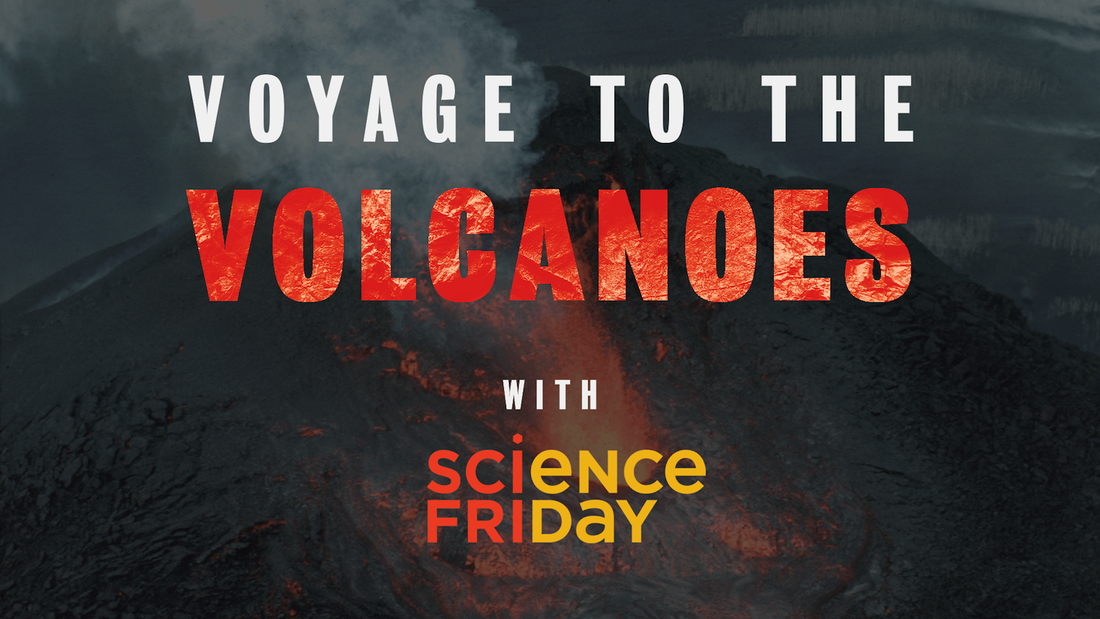
Take A Voyage To The Volcanoes With SciFri!
On February 18 in NYC, volcanologists and author N.K. Jemisin guide us through an evening of quakes, shakes, and geologic events.
Adventurers who attend will experience an evening of hands-on experiments with disaster researcher Mika McKinnon and the SciFri team, and see what it’s like to work near an active volcano with volcanologist Jess Phoenix. The producers of the American Museum of Natural History’s Shelf Life will give us a behind-the-scenes look at the museum’s Experimental Petrology Lab, and volcanologist Dr. Janine Krippner will debunk the biggest volcano myths. Finally, Science Friday Book Club will gather ‘round the fire for a live interview with N.K. Jemisin, author of the Hugo Award-winning book The Fifth Season.
See event here
On February 18 in NYC, volcanologists and author N.K. Jemisin guide us through an evening of quakes, shakes, and geologic events.
Adventurers who attend will experience an evening of hands-on experiments with disaster researcher Mika McKinnon and the SciFri team, and see what it’s like to work near an active volcano with volcanologist Jess Phoenix. The producers of the American Museum of Natural History’s Shelf Life will give us a behind-the-scenes look at the museum’s Experimental Petrology Lab, and volcanologist Dr. Janine Krippner will debunk the biggest volcano myths. Finally, Science Friday Book Club will gather ‘round the fire for a live interview with N.K. Jemisin, author of the Hugo Award-winning book The Fifth Season.
See event here
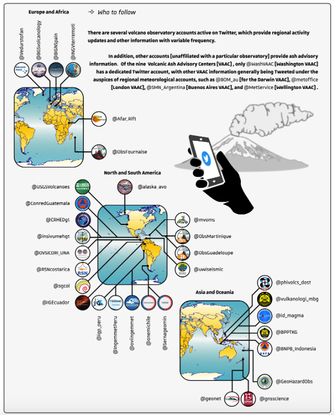
New Editorial! The use of social media in volcano science communication: challenges and opportunities
By Williams, R. and Krippner, J. (2019)
"During a volcanic crisis, effective communication be-
tween the institution responsible for monitoring the
volcano, local government, civil defense authorities, the
media and ultimately the public is essential to ensuring
safe management of the crisis."
Read the full editorial (open access) here: www.jvolcanica.org/ojs/index.php/volcanica/article/view/25
By Williams, R. and Krippner, J. (2019)
"During a volcanic crisis, effective communication be-
tween the institution responsible for monitoring the
volcano, local government, civil defense authorities, the
media and ultimately the public is essential to ensuring
safe management of the crisis."
Read the full editorial (open access) here: www.jvolcanica.org/ojs/index.php/volcanica/article/view/25
Communicating about Agung, how did that even happen?
At the end of 2017 I dropped everything in my life to communicate the Agung crisis online. Just me, my two cats, and my laptop at the kitchen table. All night, every night, for just over three months.
I am going over the notes that I took during the Agung crisis in order to prepare a talk that I will be giving at the Cities on Volcanoes conference next month. From the beginning, it was very clear to me that this was something that we, as a global volcanology community, need to learn from. During the crisis I took a lot of notes. I took screenshots of thank you messages (showing what was helpful), critics, hard questions, points of confusion, evolution of the eruption, and much more. This was all with the goal to one day learn from this experience so that the next time this happens, we will be better prepared (turns out it is already happening with the Kilauea eruption and USGS is doing a great job!).
So, what the heck happened?
Read the full post here.
At the end of 2017 I dropped everything in my life to communicate the Agung crisis online. Just me, my two cats, and my laptop at the kitchen table. All night, every night, for just over three months.
I am going over the notes that I took during the Agung crisis in order to prepare a talk that I will be giving at the Cities on Volcanoes conference next month. From the beginning, it was very clear to me that this was something that we, as a global volcanology community, need to learn from. During the crisis I took a lot of notes. I took screenshots of thank you messages (showing what was helpful), critics, hard questions, points of confusion, evolution of the eruption, and much more. This was all with the goal to one day learn from this experience so that the next time this happens, we will be better prepared (turns out it is already happening with the Kilauea eruption and USGS is doing a great job!).
So, what the heck happened?
Read the full post here.
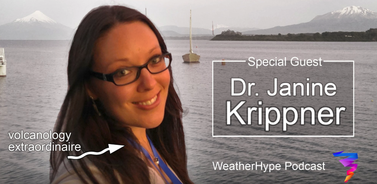
WeatherHype Podcast Episode 45: Crisis Communication of Volcanic Proportions
Hype of the Week:
Castle and Minh are joined by Dr. Janine Krippner to talk about the vast world of volcanology, the recent Kīlauea event, social media, and risk communication.
http://www.weatherhypepodcast.com/episode-45.html
Hype of the Week:
Castle and Minh are joined by Dr. Janine Krippner to talk about the vast world of volcanology, the recent Kīlauea event, social media, and risk communication.
http://www.weatherhypepodcast.com/episode-45.html
New Research Paper
Parametric analysis of lava dome-collapse events and pyroclastic deposits at Shiveluch volcano, Kamchatka, using visible and infrared satellite data
Abstract
For the years 2001 to 2013 of the ongoing eruption of Shiveluch volcano, a combination of different satellite remote sensing data are used to investigate the dome-collapse events and the resulting pyroclastic deposits. Shiveluch volcano in Kamchatka, Russia, is one of the world’s most active dome-building volcanoes, which has produced some of the largest known historical block-and-ash flows (BAFs). Globally, quantitative data for deposits resulting from such large and long-lived dome-forming eruptions, especially like those at Shiveluch, are scarce. We use Advanced Spaceborne Thermal Emission and Reflection Radiometer (ASTER) thermal infrared (TIR), shortwave infrared (SWIR), and visible-near infrared (VNIR) data to analyze the dome-collapse scars and BAF deposits that were formed during eruptions and collapse events in 2001, 2004, 2005, 2007, 2009, 2010, and two events in 2013. These events produced flows with runout distances of as far as 19 km from the dome, and with aerial extents of as much as 22.3 km2 . Over the 12 years of this period of investigation, there is no trend in deposit area or runout distances of the flows through time. However, two potentially predictive features are apparent in our data set: 1) the largest dome-collapse events occurred when the dome exceeded a relative height (from dome base to top) of 500 m; 2) collapses were preceded by thermal anomalies in six of the cases in which ASTER data were available, although the areal extent of these precursory thermal areas did not generally match the size of the collapse events as indicated by scar area (volumes are available for three collapse events). Linking the deposit distribution to the area, location, and temperature profiles of the dome-collapse scars provides a basis for determining similar future hazards at Shiveluch and at other dome-forming volcanoes. Because of these factors, we suggest that volcanic hazard analysis and mitigation at volcanoes with similar BAF emplacement behavior may be improved with detailed, synoptic studies, especially when it is possible to access and interpret appropriate remote sensing data in near-real time
Read the full paper here.
Parametric analysis of lava dome-collapse events and pyroclastic deposits at Shiveluch volcano, Kamchatka, using visible and infrared satellite data
Abstract
For the years 2001 to 2013 of the ongoing eruption of Shiveluch volcano, a combination of different satellite remote sensing data are used to investigate the dome-collapse events and the resulting pyroclastic deposits. Shiveluch volcano in Kamchatka, Russia, is one of the world’s most active dome-building volcanoes, which has produced some of the largest known historical block-and-ash flows (BAFs). Globally, quantitative data for deposits resulting from such large and long-lived dome-forming eruptions, especially like those at Shiveluch, are scarce. We use Advanced Spaceborne Thermal Emission and Reflection Radiometer (ASTER) thermal infrared (TIR), shortwave infrared (SWIR), and visible-near infrared (VNIR) data to analyze the dome-collapse scars and BAF deposits that were formed during eruptions and collapse events in 2001, 2004, 2005, 2007, 2009, 2010, and two events in 2013. These events produced flows with runout distances of as far as 19 km from the dome, and with aerial extents of as much as 22.3 km2 . Over the 12 years of this period of investigation, there is no trend in deposit area or runout distances of the flows through time. However, two potentially predictive features are apparent in our data set: 1) the largest dome-collapse events occurred when the dome exceeded a relative height (from dome base to top) of 500 m; 2) collapses were preceded by thermal anomalies in six of the cases in which ASTER data were available, although the areal extent of these precursory thermal areas did not generally match the size of the collapse events as indicated by scar area (volumes are available for three collapse events). Linking the deposit distribution to the area, location, and temperature profiles of the dome-collapse scars provides a basis for determining similar future hazards at Shiveluch and at other dome-forming volcanoes. Because of these factors, we suggest that volcanic hazard analysis and mitigation at volcanoes with similar BAF emplacement behavior may be improved with detailed, synoptic studies, especially when it is possible to access and interpret appropriate remote sensing data in near-real time
Read the full paper here.
Recommended paper for science communicators: Would you like people to listen to you? Be more likeable! By Dr. Sara K. McBride
"I blurted out the above statement during a lightning talk recently at the Northern California Earthquake Hazards Workshop. I was presenting social science research conducted in Christchurch, New Zealand, during the Canterbury earth- quake sequence, specifically regarding earthquake forecasts and their communication. My statement was met with bouts of laughter and a few claps. Reflecting back, I regret being so blunt with my colleagues, but here is what the social science research suggests: Likeability and relatability are key factors in whether people listen to you or not.
Relationships and relatability are essential parts of good communication; their importance tends to be undervalued in communicating science. Often we get so focused on our mes- sages that we overlook the relationship we have with our many diverse publics (or audiences, if you prefer). Jacobson (2003) found that focusing solely on our messages rather than the audience means that messages are doomed (at best) to be irrel- evant or (at worst) counterproductive. Brehm and Brehm (2013) argue that counterproductive effects include a push- back attitude against authority that results in reluctance to change. It is easy to understand; we can control our messages, but our likeability or relatability can include factors we simply cannot change because people have a wide variety of prejudices and biases toward gender, ethnicity, facial features, age, etc. But there are things that we can control, based on research, in terms of communicating when it comes to our likeability."
Read full article.
"I blurted out the above statement during a lightning talk recently at the Northern California Earthquake Hazards Workshop. I was presenting social science research conducted in Christchurch, New Zealand, during the Canterbury earth- quake sequence, specifically regarding earthquake forecasts and their communication. My statement was met with bouts of laughter and a few claps. Reflecting back, I regret being so blunt with my colleagues, but here is what the social science research suggests: Likeability and relatability are key factors in whether people listen to you or not.
Relationships and relatability are essential parts of good communication; their importance tends to be undervalued in communicating science. Often we get so focused on our mes- sages that we overlook the relationship we have with our many diverse publics (or audiences, if you prefer). Jacobson (2003) found that focusing solely on our messages rather than the audience means that messages are doomed (at best) to be irrel- evant or (at worst) counterproductive. Brehm and Brehm (2013) argue that counterproductive effects include a push- back attitude against authority that results in reluctance to change. It is easy to understand; we can control our messages, but our likeability or relatability can include factors we simply cannot change because people have a wide variety of prejudices and biases toward gender, ethnicity, facial features, age, etc. But there are things that we can control, based on research, in terms of communicating when it comes to our likeability."
Read full article.
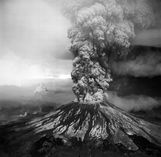
Volcanologists warn world is unprepared for next major eruption
A big blast could hobble global trade, communications and financial systems.
Nature news article By Alexandra Witze
...
“The next VEI-7 eruption could occur within our lifetimes, or it could be hundreds of years down the road,” says Chris Newhall, a volcanologist with the Mirisbiris Garden and Nature Center in Santo Domingo, Philippines. But the time to have this discussion is now, he says, so that researchers and government officials can plan and prepare before an emergency strikes.
Newhall is the lead author of a paper published last week in Geosphere1 that explores the potential consequences of the next VEI-7 eruption. His co-authors are volcanologist Stephen Self of the University of California, Berkeley — with whom Newhall devised the VEI scale2 in 1982 — and Alan Robock, a climate scientist at Rutgers University in New Brunswick, New Jersey. All three have researched the VEI-5 eruption of Mount St Helens in Washington state in 1980, and the VEI-6 eruption of Mount Pinatubo in the Philippines in 1991.
...
Preparing for rare but deadly eruptions is as important as dealing with smaller, more-frequent ones, says Janine Krippner, a volcanologist at Concord University in Athens, West Virginia. “Even with the lower probability of these larger events, when they do occur people will look to scientists, emergency managers, governments and other entities and expect them to be prepared,” she says. “We owe it to our communities to be researching potentially devastating eruptions, so we can guide people on what to do.”
Read the full article here.
A big blast could hobble global trade, communications and financial systems.
Nature news article By Alexandra Witze
...
“The next VEI-7 eruption could occur within our lifetimes, or it could be hundreds of years down the road,” says Chris Newhall, a volcanologist with the Mirisbiris Garden and Nature Center in Santo Domingo, Philippines. But the time to have this discussion is now, he says, so that researchers and government officials can plan and prepare before an emergency strikes.
Newhall is the lead author of a paper published last week in Geosphere1 that explores the potential consequences of the next VEI-7 eruption. His co-authors are volcanologist Stephen Self of the University of California, Berkeley — with whom Newhall devised the VEI scale2 in 1982 — and Alan Robock, a climate scientist at Rutgers University in New Brunswick, New Jersey. All three have researched the VEI-5 eruption of Mount St Helens in Washington state in 1980, and the VEI-6 eruption of Mount Pinatubo in the Philippines in 1991.
...
Preparing for rare but deadly eruptions is as important as dealing with smaller, more-frequent ones, says Janine Krippner, a volcanologist at Concord University in Athens, West Virginia. “Even with the lower probability of these larger events, when they do occur people will look to scientists, emergency managers, governments and other entities and expect them to be prepared,” she says. “We owe it to our communities to be researching potentially devastating eruptions, so we can guide people on what to do.”
Read the full article here.
CALLING ALL MEDIA
I am putting together a page of trusted websites you can refer to for volcano-related information. Please let me know what else you want to see here that would help you to gain the knowledge you need to do your job:
Communicating Volcanoes: Resources for Media
I am putting together a page of trusted websites you can refer to for volcano-related information. Please let me know what else you want to see here that would help you to gain the knowledge you need to do your job:
Communicating Volcanoes: Resources for Media
How volcanic ash can bring down an airplane
The eruption of Indonesia’s Mount Sinabung prompted an aviation warning — here’s why
By Rachel Becker
When Indonesia’s Mount Sinabung erupted on Monday morning, the volcano spewed a roiling cloud of ash and gases more than 23,000 feet into the air. The eruption prompted a “red notice” for the aviation industry, alerting pilots to the ash cloud so they could steer clear of it. But could tiny particles of volcanic ash really bring down an airplane?
Absolutely. In fact, the mixture of crushed rocks, gases, and tiny shards of glass in a volcanic ash cloud can sandblast the plane’s exterior, melt onto the engine, and fry key navigational and communications systems. That’s why nine Volcanic Ash Advisory Centers around the world keep watch for volcanic eruptions like yesterday’s — one of Sinabung’s biggest since the volcano woke back up in 2010, volcanologist Janine Krippner says. “Ash plumes can travel thousands of kilometers away from the volcano itself,” Krippner says. “So being able to track the ash clouds in real time, to divert the planes around, is so, so important.”
Read the full article here.
The eruption of Indonesia’s Mount Sinabung prompted an aviation warning — here’s why
By Rachel Becker
When Indonesia’s Mount Sinabung erupted on Monday morning, the volcano spewed a roiling cloud of ash and gases more than 23,000 feet into the air. The eruption prompted a “red notice” for the aviation industry, alerting pilots to the ash cloud so they could steer clear of it. But could tiny particles of volcanic ash really bring down an airplane?
Absolutely. In fact, the mixture of crushed rocks, gases, and tiny shards of glass in a volcanic ash cloud can sandblast the plane’s exterior, melt onto the engine, and fry key navigational and communications systems. That’s why nine Volcanic Ash Advisory Centers around the world keep watch for volcanic eruptions like yesterday’s — one of Sinabung’s biggest since the volcano woke back up in 2010, volcanologist Janine Krippner says. “Ash plumes can travel thousands of kilometers away from the volcano itself,” Krippner says. “So being able to track the ash clouds in real time, to divert the planes around, is so, so important.”
Read the full article here.
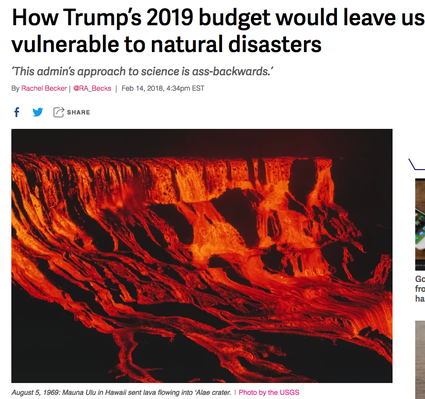
We need funding for natural hazards to prepare our communities and reduce the impacts. "Natural Disasters" do not exist. Natural hazards turn into disasters when people are involved, and often a lack of planning makes this much worse.
“People don’t think of the US as being a volcanically rich place, but it really is,” Phoenix says. There are 169 active volcanoes in the US, and 55 of them could endanger people or property. Parts of Seattle and Tacoma in Washington, for example, are built on the hardened remains of mud that flowed off of Mt. Rainier during earlier eruptions. And it could erupt again. “A lot of volcanoes give warning about what they’re going to do,” agrees Janine Krippner, a volcanologist at Concord University. “But what good is a warning, if we don’t catch it?”
Read the full article here.
“People don’t think of the US as being a volcanically rich place, but it really is,” Phoenix says. There are 169 active volcanoes in the US, and 55 of them could endanger people or property. Parts of Seattle and Tacoma in Washington, for example, are built on the hardened remains of mud that flowed off of Mt. Rainier during earlier eruptions. And it could erupt again. “A lot of volcanoes give warning about what they’re going to do,” agrees Janine Krippner, a volcanologist at Concord University. “But what good is a warning, if we don’t catch it?”
Read the full article here.
Concord University Key Partner On National Science Foundation Grant; Hires Widely-Known Volcanologist
ATHENS, W.Va. – Concord University along with five partner institutions has been awarded $579,998 through the U.S. National Science Foundation’s EarthCube program which seeks to transform research in the earth sciences via publically-accessible databases and online tools. The funded project is titled “THROUGHPUT: Standards and Services for Community Curated Repositories.” Other partner institutions include Columbia University, the Consortium for Ocean Leadership, Northern Arizona University, the University of Wisconsin, and the University of Minnesota.
Dr. Stephen Kuehn, Associate Professor of Geology and Director the Electron Microprobe Laboratory, serves as Concord’s lead investigator. A major contribution to the project is information on explosive eruptions of Cascade Range volcanoes and of other volcanoes from around the world that has been collected by Dr. Kuehn and numerous Concord geology students over the last seven years. Data collected by researchers at other institutions will also be included.
Concord has recently hired Dr. Janine Krippner to work on the THROUGHPUT project. Originally from New Zealand, she recently completed her doctoral degree at the University of Pittsburgh where she studied pyroclastic flows from Shiveluch volcano in Kamchatka and from Mount St. Helens in Washington State. She actively engages in volcano outreach on social media and has attracted more than 11 thousand followers on Twitter (@janinekrippner). She has also been interviewed many times by both print and broadcast media including the BBC News, CNN, Discovery Channel, NPR, The Wall Street Journal, New York Times, National Geographic, and other media outlets around the world.
Public presentations featuring Dr. Krippner’s experience with communicating the eruptions of Agung volcano in the Philippines are being planned for late February.
For additional information please contact Dr. Kuehn at sckuehn at concord.edu or 304-384-6322 or contact Dr. Krippner at jkrippner at concord.edu or on Twitter.
ATHENS, W.Va. – Concord University along with five partner institutions has been awarded $579,998 through the U.S. National Science Foundation’s EarthCube program which seeks to transform research in the earth sciences via publically-accessible databases and online tools. The funded project is titled “THROUGHPUT: Standards and Services for Community Curated Repositories.” Other partner institutions include Columbia University, the Consortium for Ocean Leadership, Northern Arizona University, the University of Wisconsin, and the University of Minnesota.
Dr. Stephen Kuehn, Associate Professor of Geology and Director the Electron Microprobe Laboratory, serves as Concord’s lead investigator. A major contribution to the project is information on explosive eruptions of Cascade Range volcanoes and of other volcanoes from around the world that has been collected by Dr. Kuehn and numerous Concord geology students over the last seven years. Data collected by researchers at other institutions will also be included.
Concord has recently hired Dr. Janine Krippner to work on the THROUGHPUT project. Originally from New Zealand, she recently completed her doctoral degree at the University of Pittsburgh where she studied pyroclastic flows from Shiveluch volcano in Kamchatka and from Mount St. Helens in Washington State. She actively engages in volcano outreach on social media and has attracted more than 11 thousand followers on Twitter (@janinekrippner). She has also been interviewed many times by both print and broadcast media including the BBC News, CNN, Discovery Channel, NPR, The Wall Street Journal, New York Times, National Geographic, and other media outlets around the world.
Public presentations featuring Dr. Krippner’s experience with communicating the eruptions of Agung volcano in the Philippines are being planned for late February.
For additional information please contact Dr. Kuehn at sckuehn at concord.edu or 304-384-6322 or contact Dr. Krippner at jkrippner at concord.edu or on Twitter.
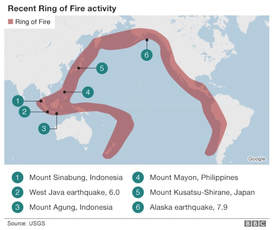
Ring of Fire's volcanic and quake activity is normal, say scientists
"Dr Janine Krippner, a New Zealand volcanologist based in the US, tweeted that the zone was "not referred to as the Ring of Fire because it sits there doing nothing".
While there are fears that volcanoes are becoming more frequent, she said the rate of eruptions had "not recently increased".
"We now have satellites to capture more eruptions, and the internet to talk about more eruptions," she said."
Read more here.
"Dr Janine Krippner, a New Zealand volcanologist based in the US, tweeted that the zone was "not referred to as the Ring of Fire because it sits there doing nothing".
While there are fears that volcanoes are becoming more frequent, she said the rate of eruptions had "not recently increased".
"We now have satellites to capture more eruptions, and the internet to talk about more eruptions," she said."
Read more here.
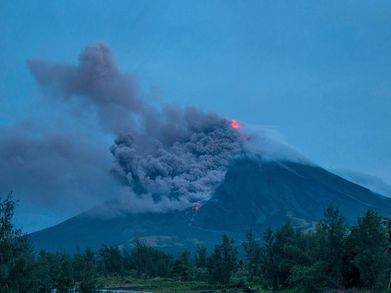
Geology Makes the Mayon Volcano Visually Spectacular—And Dangerously Explosive
What’s going on inside one of the Philippines’ most active volcanoes?
Last weekend, the Philippines’ most active—and attractive—volcano, Mount Mayon, roared back to life. The 8,070-foot volcano began releasing spurts of incandescent molten rock and spewing clouds of smoke and ash into the sky, causing over 30,000 local residents to evacuate the region. By the morning of January 18, the gooey streams of lava had traveled almost two miles from the summit.
Though the images of Mount Mayon are startling, the volcano isn’t truly explosive—yet. The Philippine Institute of Volcanology and Seismology (PHIVolcs), which monitors the numerous volcanoes of the island chain, has set the current warning level at a 3 out of 5, which means that there is ”relatively high unrest.” At this point, explosive eruption is not imminent, says Janine Krippner, a volcanologist and postdoctoral researcher researcher at Concord University. If the trend continues, however, an eruption is possible in the next few weeks.
Read the article here.
What’s going on inside one of the Philippines’ most active volcanoes?
Last weekend, the Philippines’ most active—and attractive—volcano, Mount Mayon, roared back to life. The 8,070-foot volcano began releasing spurts of incandescent molten rock and spewing clouds of smoke and ash into the sky, causing over 30,000 local residents to evacuate the region. By the morning of January 18, the gooey streams of lava had traveled almost two miles from the summit.
Though the images of Mount Mayon are startling, the volcano isn’t truly explosive—yet. The Philippine Institute of Volcanology and Seismology (PHIVolcs), which monitors the numerous volcanoes of the island chain, has set the current warning level at a 3 out of 5, which means that there is ”relatively high unrest.” At this point, explosive eruption is not imminent, says Janine Krippner, a volcanologist and postdoctoral researcher researcher at Concord University. If the trend continues, however, an eruption is possible in the next few weeks.
Read the article here.
NEW! Volcanica - The New Diamond Open Access Journal
Today is the launch day for a new Open Access Journal that started with Jamie Farquharson seeing a problem that needed to be solved:
"No single thing, but the more research I did about academic publication, the more I was convinced that there was another way to go about things. Eventually that idea became a fully-fledged diamond open access journal! "
So a team has been brought together to create the first Free to publish and Free to access Journal in Volcanology. I am very excited to be part of this team as an Editor! 'Volcanica is a broad-scope open-access international journal promoting research into all aspects of volcanology, including physical phenomena and their impact on society, health, and the environment.
Volcanica is committed to establishing a publication system that is both Free to publish and Free to access. A rigorous peer review system assures impartial assessment of quality scientific research which, thanks to Open Journal Systems, part of the Public Knowledge Project, can be accessed freely, by anyone.'
For more information:
Volcanica on Twitter
Volcanica Website
The Volcanica Team
Submission Instructions
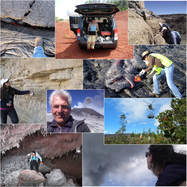
NEW! Voices of Volcanology
I have launched a public Facebook page dedicated to volcanologists reaching out to the online community as a reliable source of good information. This page is in its infancy but is open for posting volcanology resources and information. I see a gap in science communication on Facebook. Many of us are on Twitter, but keep Facebook restricted to personal life only. This is a place for us to help spread reliable information about volcanoes and hazards.
I have launched a public Facebook page dedicated to volcanologists reaching out to the online community as a reliable source of good information. This page is in its infancy but is open for posting volcanology resources and information. I see a gap in science communication on Facebook. Many of us are on Twitter, but keep Facebook restricted to personal life only. This is a place for us to help spread reliable information about volcanoes and hazards.
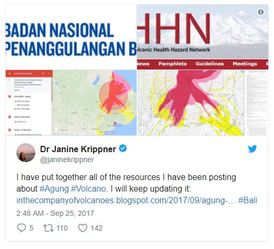
Mt. Agung Update: Why is it so hard to predict a volcanic eruption?
Posted by JoAnna Wendel
Indonesia’s Mt. Agung may be on the cusp of its first eruption since 1963, an eruption that killed more than 1000 people. Since late August, seismic signals have increased in frequency, and last Friday, officials raised the alert status to the highest level. Local officials have evacuated around 75,000 people from the area and warned residents to keep an 8-12 kilometer distance from the volcano.
However, it’s still unclear whether—or when—the volcano may erupt, scientists stress.
Volcanic eruptions are all about pressure—as buoyant magma rises through the volcano’s plumbing, the change in temperatures and pressures allows gasses to escape, putting pressure on the magma. As the magma rises more and more gas escapes, the pressure rises, until…BOOM! Scientists monitor earthquakes at the volcano, the gas it expels, and possible deformation of its surface for signs of an impending eruption.
Increasingly frequent earthquakes as the magma moves are one of the main clues, and Mt. Agung’s seismicity has increased significantly in the last week or so.
Read more here...
Posted by JoAnna Wendel
Indonesia’s Mt. Agung may be on the cusp of its first eruption since 1963, an eruption that killed more than 1000 people. Since late August, seismic signals have increased in frequency, and last Friday, officials raised the alert status to the highest level. Local officials have evacuated around 75,000 people from the area and warned residents to keep an 8-12 kilometer distance from the volcano.
However, it’s still unclear whether—or when—the volcano may erupt, scientists stress.
Volcanic eruptions are all about pressure—as buoyant magma rises through the volcano’s plumbing, the change in temperatures and pressures allows gasses to escape, putting pressure on the magma. As the magma rises more and more gas escapes, the pressure rises, until…BOOM! Scientists monitor earthquakes at the volcano, the gas it expels, and possible deformation of its surface for signs of an impending eruption.
Increasingly frequent earthquakes as the magma moves are one of the main clues, and Mt. Agung’s seismicity has increased significantly in the last week or so.
Read more here...
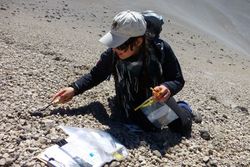
Mount Agung: The Kiwi volcanologist keeping a close eye on Bali volcano from the US
Much of the latest information on Bali's volatile Mount Agung is coming the long way around — from a Kiwi volcanologist watching an Indonesian mountain from Pittsburgh, US.
Dr Janine Krippner is working through the night to read, analyse and disseminate the latest information from Bali.
She reads tweets from volcano experts, monitors an online seismogram, interprets confusing graphs, and scours online sources for anything relevant.
She began watching the volcano closely at the start of this crisis, on September 22, when Indonesian authorities declared a Level IV alert for Mt Agung and ordered major evacuations. She could not find the information she needed.
"I figured people out there must be really struggling. I started getting comments out there from people saying they didn't know where to get information," she said.
Read more here...
Much of the latest information on Bali's volatile Mount Agung is coming the long way around — from a Kiwi volcanologist watching an Indonesian mountain from Pittsburgh, US.
Dr Janine Krippner is working through the night to read, analyse and disseminate the latest information from Bali.
She reads tweets from volcano experts, monitors an online seismogram, interprets confusing graphs, and scours online sources for anything relevant.
She began watching the volcano closely at the start of this crisis, on September 22, when Indonesian authorities declared a Level IV alert for Mt Agung and ordered major evacuations. She could not find the information she needed.
"I figured people out there must be really struggling. I started getting comments out there from people saying they didn't know where to get information," she said.
Read more here...
Agung Volcano Unrest Information
I am NOT giving my own interpretations of the data and what the data means. I am NOT, and CANNOT tell people what this volcano might or might not do. Please always refer to all official source links below. The utmost respect must be given to the local authorities monitoring Agung.
I am not in Bali, nor am I an authority on Agung Volcano. I have not worked on Agung volcano, or any Indonesian volcano for that matter. Always look to the official sources for information, or to verify any information.
For a list of official sources of information on the ongoing Agung volcano crisis go here.
I am NOT giving my own interpretations of the data and what the data means. I am NOT, and CANNOT tell people what this volcano might or might not do. Please always refer to all official source links below. The utmost respect must be given to the local authorities monitoring Agung.
I am not in Bali, nor am I an authority on Agung Volcano. I have not worked on Agung volcano, or any Indonesian volcano for that matter. Always look to the official sources for information, or to verify any information.
For a list of official sources of information on the ongoing Agung volcano crisis go here.
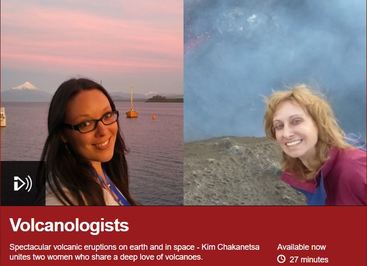
BBC Radio: The Conversation - Volcanologists
Join NASA volcanologist Rosaly Lopes and I as we talk about our careers and adventures studying volcanoes around the world.
Listen here.
Join NASA volcanologist Rosaly Lopes and I as we talk about our careers and adventures studying volcanoes around the world.
Listen here.
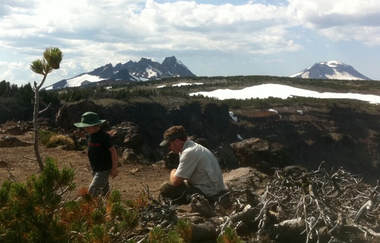
Family 'or' career?? Doing both in the geosciences
How many times are women told 'family or career'? How many times have we heard about women being treated differently because they have, or want to have, a family? We have heard that it's even a career killer. If we have kids - your career will suffer. Your kids will suffer. You will basically fail at everything. This is the message I have seen over and over again. I have a couple of issues with this. Firstly - I see women succeed at both. Secondly - I see plenty of Dads raising kids and having a career too! The old saying is that 'it takes a village to raise a child', so why do we have the stigma that women are the only ones affected by raising kids, and that it poorly affects their work? Read stories from parents in the geosciences who are making it work here. 
Science-a-thon
I have jumped on board with the Earth Science Women's Networks (ESWN) Science-a-thon to help raise funds for supporting the women in science of today and tomorrow. If you would like to support science and this great cause head over to my Crowdrise page (link below) and make a donation. My Crowdrise page for donations 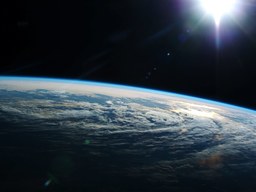
Wired: Follow All of These Earth Scientists on Twitter Right Now
By Erik Klemetti "YOU MAY HAVE heard me say this before, but I firmly believe there are few topics more fundamental to study than the workings of our planet. The earth sciences aim to unravel how the lithosphere, atmosphere, hydrosphere, and biosphere operate—and how they operate together. It is a science of synthesis. And it’s one that needs to move forward, both because of the great service the earth sciences perform for society and the understanding of world-shaping processes that they advance..." "@janinekrippner and @alisongraeting: Together, Janine Krippner and Alison Graetinger keep track of all the volcanic events that even I have troubling keeping up with. Beyond that, they run In the Company of Volcanoes as well." See the full list here.
Back in time to Mount St. Helens: News coverage of the 1980 eruption
Today marks another anniversary of the deadly eruption of Mount St. Helens volcano in Washington, USA. This eruption was one of those events where most remember where they were around the world when they heard the news. It changed the lives of those around the volcano - those who lost friends or family, their homes, their view of the local landscape, and their belief that 'it won't happen to me'. Thirty-seven years ago the world watched as the eruption took place, so what did they see? Two years ago I posted a list of resources on the eruption. This year I look back again asking what it was like for those who experienced the eruption firsthand? What did the rest of the country see through they experiences of reporters and those who were there? When the next continental-US volcano erupts some of us will be there. Some of us will have to clean up ash or mud (depending on the eruption type). The rest of us will watch the news and social media. This is how most of us are fortunate enough to experience natural disasters, and how many remember them. This collection of videos includes footage leading up to, during, and after the May 18, 1980 eruption of Mount St. Helens. Click here for post and video collection. It's all for you, girl! A message to girls everywhere from the women in volcanology
I was sad to read about how girls from the age of six tend to believe they are not as smart as boys. This is my response. |
My take on what a life in the geosciences looks like, and why we need more women in the field: Girls Into Geoscience - Janine Krippner
Spectacular volcano videos: Identifying eruption processes
"We are lucky that so many people post amazing videos of volcanic eruptions online for all of us to enjoy (see below warning), and we can learn a lot from them too. When I am looking at my satellite images of dome collapse block and ash flow and column collapse pyroclastic flow deposits on Shiveluch and Mount St. Helens volcanoes I have videos of these processes running through my mind. This is a short guide to what you are seeing in these incredible videos.
WARNING: There are very dangerous and life threatening hazards associated with retrieving this footage, and here at In the Company of Volcanoes we strongly discourage anyone from trying to take your own."
Find more videos HERE.
Volcanology Teaching Resources
I have compiled a list of teaching resources - activities, videos, datasheets, for teaching about volcanoes in the classroom. This is a growing list and I add to it when something new pops up.
"I am excited about an upcoming set of Google Hangout sessions with 6th graders talking all about volcanoes, why they erupt, why some erupt more violently than others, what their hazards are, and what we, as volcanologists, are doing to try and help people that live near them. So I sent out a request to the world of Twitter and volcanologists (links to their twitter feeds included, also full of information and resources - many more twitter volcanologists can be found) from around the world got back to me with great ideas and resources, and here they are! "
Find the blog post HERE.
I have compiled a list of teaching resources - activities, videos, datasheets, for teaching about volcanoes in the classroom. This is a growing list and I add to it when something new pops up.
"I am excited about an upcoming set of Google Hangout sessions with 6th graders talking all about volcanoes, why they erupt, why some erupt more violently than others, what their hazards are, and what we, as volcanologists, are doing to try and help people that live near them. So I sent out a request to the world of Twitter and volcanologists (links to their twitter feeds included, also full of information and resources - many more twitter volcanologists can be found) from around the world got back to me with great ideas and resources, and here they are! "
Find the blog post HERE.
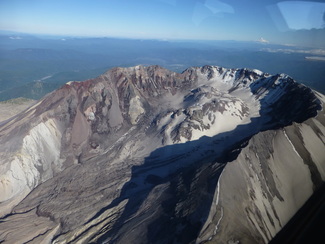
Nepris Industry Talk - Watching and Learning from Mount St. Helens Volcano
Join me on October 11 to chat about a career in volcanology, the 1980 Mount St. Helens eruption, different volcano hazards, and how volcanolgists monitor volcanoes to keep people safe.
More information and sign up here: https://www.nepris.com/sessions/session/detail/47616
Join me on October 11 to chat about a career in volcanology, the 1980 Mount St. Helens eruption, different volcano hazards, and how volcanolgists monitor volcanoes to keep people safe.
More information and sign up here: https://www.nepris.com/sessions/session/detail/47616
|
|
It's always great to chat to people about the volcanic activity around the world, especially when it's a rare glimpse into a remote volcano.
|
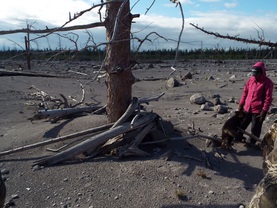
Come say hello at the 2015 AGU Fall Meeting!
I will be presenting "V23A-3066: The 2005 and 2010 dome collapse driven block and ash flows on Shiveluch volcano, Kamchatka: Morphological analysis using satellite- and field-based data" on Tuesday afternoon in the Moscone South - Poster Hall.
See out blog post: In the Company of Volcanoes at AGU
I will be presenting "V23A-3066: The 2005 and 2010 dome collapse driven block and ash flows on Shiveluch volcano, Kamchatka: Morphological analysis using satellite- and field-based data" on Tuesday afternoon in the Moscone South - Poster Hall.
See out blog post: In the Company of Volcanoes at AGU
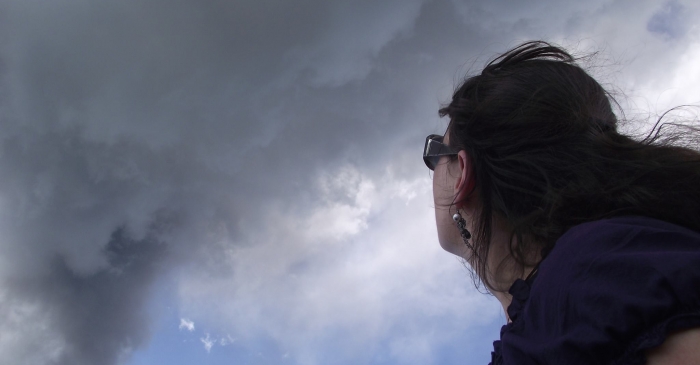 Looking up at an ash plume on Sakurajima volcano in Japan. Beware of catching volcanic ash with your eye.
Looking up at an ash plume on Sakurajima volcano in Japan. Beware of catching volcanic ash with your eye.
Interview with a Scientist
I was lucky to be picked this year to chat to the public about volcanology, in specific - Pyroclastic Flows. I will hopefully attend another session in the future, we clearly have some amazing kids out there with a love of science. My favorite moment was talking to a little boy who loves firefighting, volcanoes, and tornadoes about how I saw a baby tornado (dust devil) ON a volcano.
See: Interview with a Scientist: Justin Coughlin, Janine Krippner and Natasha Smith
I was lucky to be picked this year to chat to the public about volcanology, in specific - Pyroclastic Flows. I will hopefully attend another session in the future, we clearly have some amazing kids out there with a love of science. My favorite moment was talking to a little boy who loves firefighting, volcanoes, and tornadoes about how I saw a baby tornado (dust devil) ON a volcano.
See: Interview with a Scientist: Justin Coughlin, Janine Krippner and Natasha Smith
'In the Company of Volcanoes' Blog
A blog written with my good friend and fellow volcanologist Alison Graettinger.
http://inthecompanyofvolcanoes.blogspot.com/
Latest blog posts:
- Volcanology Teaching Resources
- In the Company of Volcanoes at AGU
- Flowing rock frozen in time at Inyo Domes, California
- Keeping an eye on Cotopaxi Volcano
- For the love of lava: Adventures on Tolbachik volcano
- The volcano rock stars of Kamchatka, Russia
- The Calbuco volcanic eruption: Communicating a natural disaster through social media
- Remembering the Mount Saint Helens 1980 eruption: 35 years later
- Volcanoes: Carrying on a family passion
- By way of introduction
A blog written with my good friend and fellow volcanologist Alison Graettinger.
http://inthecompanyofvolcanoes.blogspot.com/
Latest blog posts:
- Volcanology Teaching Resources
- In the Company of Volcanoes at AGU
- Flowing rock frozen in time at Inyo Domes, California
- Keeping an eye on Cotopaxi Volcano
- For the love of lava: Adventures on Tolbachik volcano
- The volcano rock stars of Kamchatka, Russia
- The Calbuco volcanic eruption: Communicating a natural disaster through social media
- Remembering the Mount Saint Helens 1980 eruption: 35 years later
- Volcanoes: Carrying on a family passion
- By way of introduction
A little bit about my story from my home town, Te Awamutu
